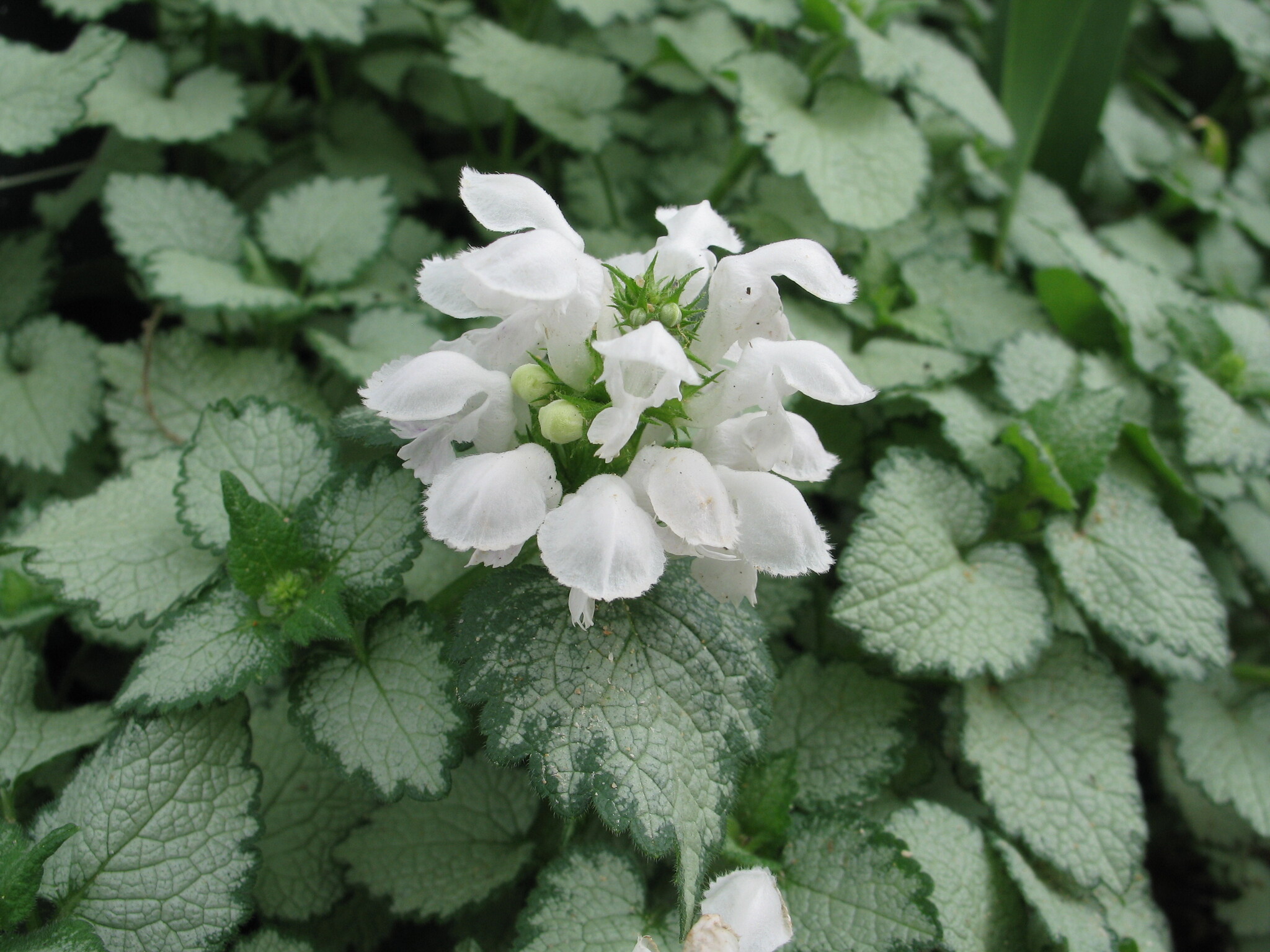
Classical name.
Annual and perennial herbs, often with trailing or stoloniferous stems. Leaves opposite, more or less ovate, mostly cordate and rough. Flower clusters often in 12-flowered whorls. Flowers with calyx tubular to bell-shaped, 5-10-veined, teeth 5, more or less equal. Corolla 2-lipped, the upper lip hooded and bent over, lower lip 3-lobed, spreading. Stamens 4, the upper pair rudimentary.
Grown mostly as silvery variegated groundcovers in dry shade.
L. amplexicaule L., Dead Nettle, from Europe is naturalised in all states and can cause 'staggers' if eaten by stock; it is not cultivated as a garden plant.
Non-variegated plants by seed, variegated plants by division of rooted sections.
16 species from temperate Eurasia, mostly the Mediterranean region.
Leaves in verticils conspicuous; bracts to half as long as calyx tube; calyx teeth subulate; flowers mostly purplish red or white.
Mennema (1989).
Source: (2002). Lamiaceae. In: . Horticultural Flora of South-eastern Australia. Volume 4. Flowering plants. Dicotyledons. Part 3. The identification of garden and cultivated plants. University of New South Wales Press.
